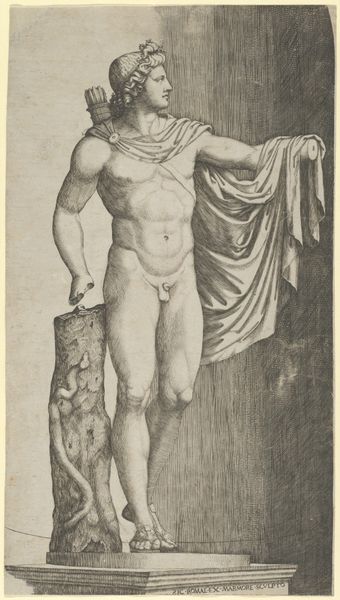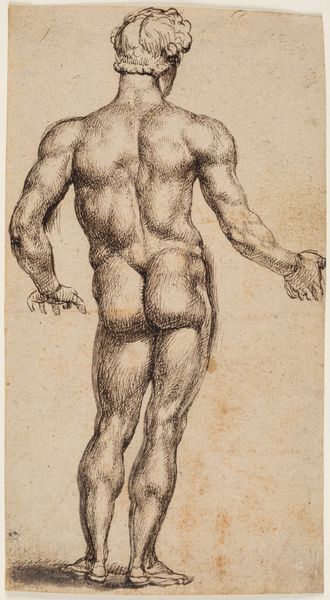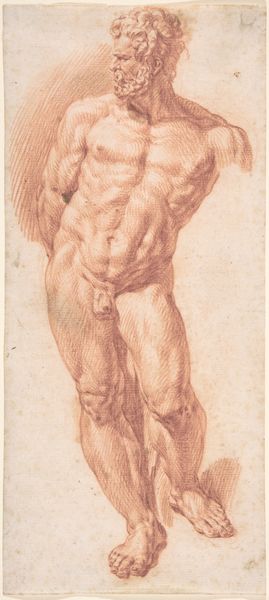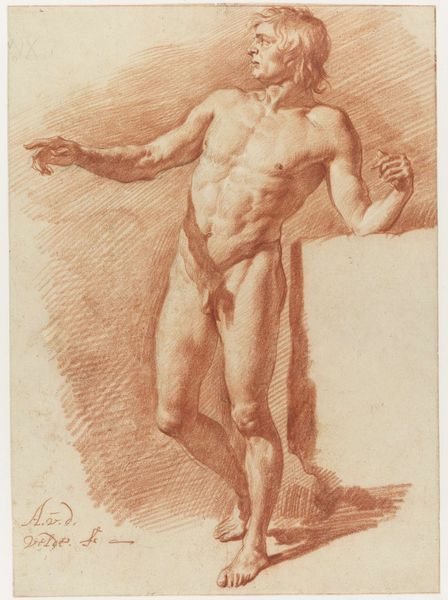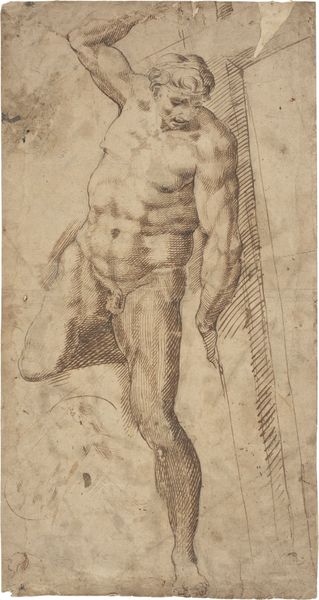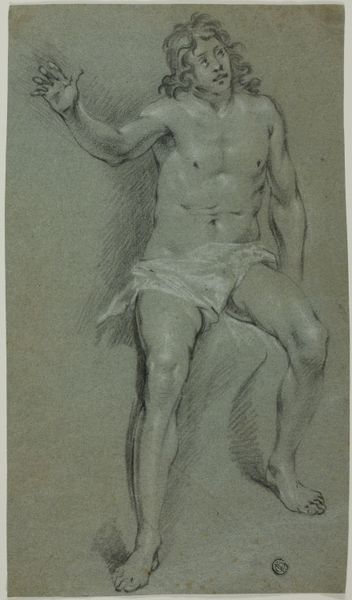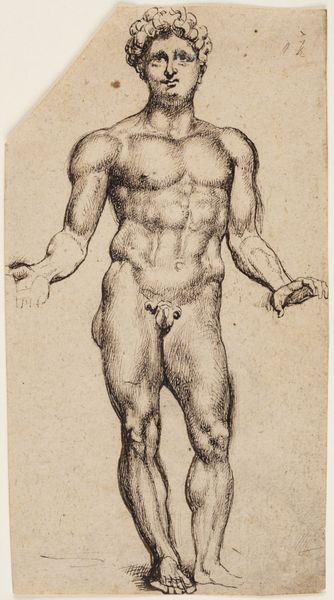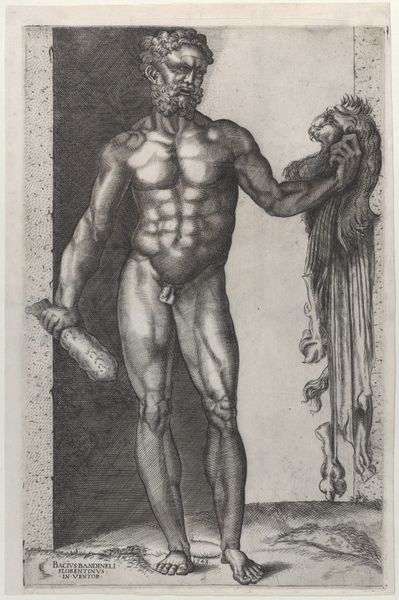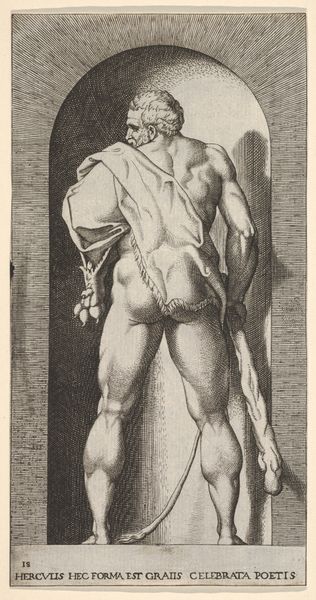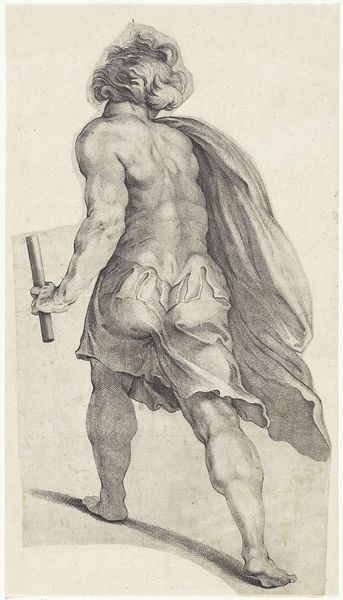
drawing, engraving
#
drawing
#
baroque
#
figuration
#
history-painting
#
academic-art
#
nude
#
engraving
Dimensions: height 215 mm, width 122 mm
Copyright: Rijks Museum: Open Domain
Jan de Bisschop created this print, "Satyr with a scabellum and cymbals," using pen and brown ink in the Netherlands sometime in the mid-17th century. It depicts a nude, muscular satyr in contrapposto. He balances on a scabellum, an ancient percussion instrument played with the feet, while holding cymbals, instruments associated with ecstatic religious rituals. The Dutch Republic was a major center for the printing and publishing industries at the time. Printmaking allowed artists to disseminate images widely and cheaply, contributing to the growth of a visual culture accessible to a broad public. Dutch artists mined classical antiquity, using it to ennoble their republic and implicitly compare it to the Roman one. The art market was highly competitive, and artists needed to develop recognizable styles and subject matter to attract buyers. The historian's role here is to decode and interpret this image. By consulting emblem books, histories, and accounts of ancient art, we can reconstruct the cultural context in which De Bisschop was working and better understand the image's resonance for its original audience. Ultimately, art's meaning is always rooted in its specific historical and institutional circumstances.
Comments
No comments
Be the first to comment and join the conversation on the ultimate creative platform.



